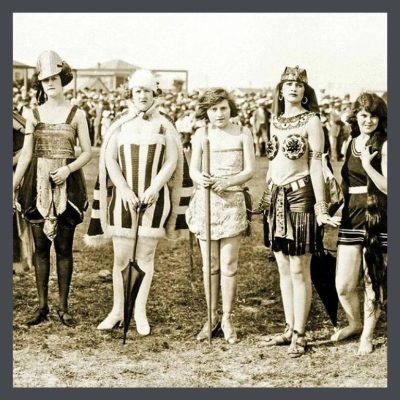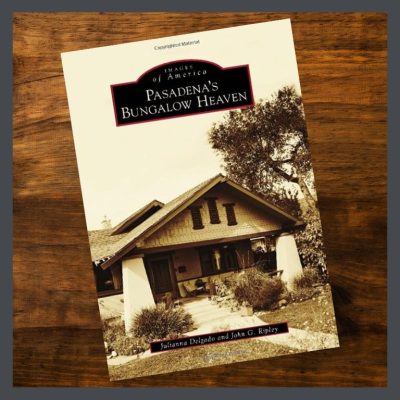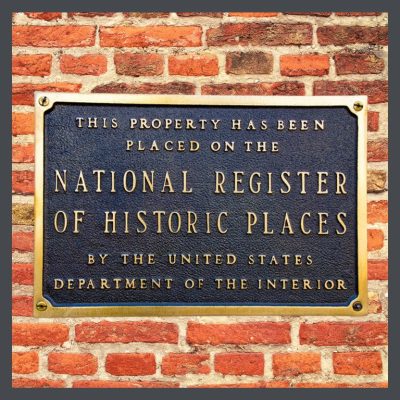NOTE: This is not an article about the benefits nor the drawbacks of historic designations. This is just information about what they are. I have included many links in case you would like to know more.
 First, let’s look at a common misconception about historical societies. Historical societies traditionally are 501 (c)(3)’s, non-profit, charitable organizations, dedicated to collecting, preserving, interpreting, & promoting the history of a city or sometimes a neighborhood, in photographs, documents, artifacts & recordings. They focus on research, education & creating awareness of the cultural & architectural history of the area. They generally host educational events, lectures, workshops, tours & exhibitions which display their archived materials & teach the community about the culture of bygone years. They offer these materials to academics & the public for research. Many societies own & run museums.
First, let’s look at a common misconception about historical societies. Historical societies traditionally are 501 (c)(3)’s, non-profit, charitable organizations, dedicated to collecting, preserving, interpreting, & promoting the history of a city or sometimes a neighborhood, in photographs, documents, artifacts & recordings. They focus on research, education & creating awareness of the cultural & architectural history of the area. They generally host educational events, lectures, workshops, tours & exhibitions which display their archived materials & teach the community about the culture of bygone years. They offer these materials to academics & the public for research. Many societies own & run museums.
They have nothing to do with establishing historic districts, other than providing materials for research & sometimes, provide advice as to the process. They do not make rules or statutes. They do not participate in enforcing rules or statutes. This is done by governing bodies.
For example, The Eagle Rock Valley Historical Society was very helpful in my research to have the Hare House designated. They had archived material about the house, the family & the neighborhood that was very useful.
CRITERIA FOR HISTORIC DESIGNATION
- To be designated at any level, a structure or area, must be associated with events that have greatly contributed to the history of a city, state or to our nation.
- Have some association with a person who is significant in the history of a city, state or our nation.
- Display the characteristics of a particular type, period, or method of construction. A great example of this is bungalows! The structure might be the work of a master, or it might possess highly artistic values.
- If you were to study this structure or group of structures, it would show you information important in prehistory or history.
A building or group of buildings, would need to possess one or more of these attributes in order to be considered for inclusion.
 The basis of historic preservation in the United States is The Secretary of the Interior’s Standards for the Treatment of Historic Properties with Guidelines for Preserving, Rehabilitating, Restoring & Reconstructing Historic Buildings, (Each explained in the PRESERVATION GLOSSARY here.) which provides guidance to historic building owners & building managers, preservation consultants, architects, contractors, & project reviewers prior to beginning work. It explains how to repair & maintain historic materials & provides the basis for many design guidelines in many cities. The basic philosophy of The Standards is best expressed in the definition of rehabilitation – “the process of returning a property to a state of utility through repair or alteration which makes possible an efficient contemporary use while preserving those portions & features of the property which are significant to its historic, architectural & cultural values.” It encourages & provides technical data for respecting the original character of each historic structure, while allowing for updating for functionality & safety.
The basis of historic preservation in the United States is The Secretary of the Interior’s Standards for the Treatment of Historic Properties with Guidelines for Preserving, Rehabilitating, Restoring & Reconstructing Historic Buildings, (Each explained in the PRESERVATION GLOSSARY here.) which provides guidance to historic building owners & building managers, preservation consultants, architects, contractors, & project reviewers prior to beginning work. It explains how to repair & maintain historic materials & provides the basis for many design guidelines in many cities. The basic philosophy of The Standards is best expressed in the definition of rehabilitation – “the process of returning a property to a state of utility through repair or alteration which makes possible an efficient contemporary use while preserving those portions & features of the property which are significant to its historic, architectural & cultural values.” It encourages & provides technical data for respecting the original character of each historic structure, while allowing for updating for functionality & safety.
It is this original character, (See character-defining features in the glossary.) either from the period or sensitively repaired or reconstructed, of a single structure, site object or of an area, which forms the criteria for designation.
A SINGLE STRUCTURE DESIGNATION
A house, a church, a public building, a site or an object such as a fountain or a bridge, can be designated as historic based on its significance in history, its relationship to an important figure in history, or its architecture. The Hare House was awarded Los Angeles & California landmark statuses because the Hare’s contributed greatly to the local community & were active in other areas of the state & because the style of the house contributed to the bungalow character of the neighborhood.
HISTORIC DISTRICTS
 There are several types of historic districts. One thing that it is not is a historic neighborhood. A historic neighborhood is area in which there are many older houses. To be considered a historic district, the neighborhood must be designated as such by a governing body at some level.
There are several types of historic districts. One thing that it is not is a historic neighborhood. A historic neighborhood is area in which there are many older houses. To be considered a historic district, the neighborhood must be designated as such by a governing body at some level.
A historic district is an area which has a significant concentration of sites, buildings, structures, or objects, urban or rural, that are united by period (or periods) or style (or styles) or important events. Based on these factors, it has been designated as such by a city, state or federal body (or all of them!) as historic.
One of the most well-known areas so designated is Bungalow Heaven in Pasadena, California. It is a charming area filled with bungalows of every style, shape & size that draws visitors from all over the United States to its annual home tour.
LEVELS OF HISTORIC DESIGNATION
LOCAL (City)
This level, through the means of a preservation ordinance, provides properties with a degree of protection from unnecessary demolition or alterations (generally only exterior) that damage or destroy the character of the building. A guideline for a particular area is written specifically for the history & individual architectural styles of that area, based on the Secretary’s Standards.
Many cities have individual guidelines for each neighborhood that are tailored to the design features of that area. These guidelines are very educational, generally covering building anatomy, basic construction & clear descriptions & photos of the different styles found in the neighborhood.
Historic preservation staff or boards, made of citizens, conduct reviews of proposed changes to locally designated properties.
STATE
Though differing from state-to-state, listing here triggers limited regulatory protection from state government actions. Many states offer state funding, tax benefits, or other incentives. The owners of the Hare house, on the California register, enjoy a sizeable break on their state property taxes. Additionally, if any repairs are made, in most states, the local building inspector must grant code alternatives provided under the State Historic Building Code. I am not even going to try to explain what that is because it varies from state to state. Follow this link to see what the National Park Service says about building & safety codes.
NATIONAL DESIGNATION
 These structures, sites, objects or areas which must be a minimum of 50 years old, have a strong association with a significant event or events in the history of our country, not just a section of the country; have an association with & tell the story of a person or group of persons who strongly affected that history; are an outstanding example of a type of structure or group of structures; & hold lessons about our nation’s history that can be learned through the study of the structures or districts.
These structures, sites, objects or areas which must be a minimum of 50 years old, have a strong association with a significant event or events in the history of our country, not just a section of the country; have an association with & tell the story of a person or group of persons who strongly affected that history; are an outstanding example of a type of structure or group of structures; & hold lessons about our nation’s history that can be learned through the study of the structures or districts.
The National Park Service, in the U.S. Department of the Interior, manage 2 programs. The first is the National Historic Landmarks (NHL) Program. The second is listing on the National Register of Historic Places (NR.)
Something that heartbroken neighborhoods have realized only after they have lost properties to development, is that neither NHL nor NR designations affect what private owners can do with their property. Both do offer protections in the event that federal government work threatens a place, for example, the destruction of whole neighborhoods to make way for the building of a federal highway. They also offer preservation funds & federal historic tax credits that can help offset the costs of rehabilitation. You would need to contact them to see if you might qualify.
Please let me know if there is anything more you want to know about historic districts!
READ MORE ABOUT NEIGHBORHOOD PRESERVATION COMMITTEES!
NEIGHBORHOOD HISTORIC PRESERVATION COMMITTEES- BUILDING COMMUNITY![]()
BASIC HISTORIC PRESERVATION GLOSSARY OF TERMS![]()
NEIGHBORHOOD PRESERVATION COMMITTEE MEMBERSHIP ACTIVITIES![]()
PUBLIC EVENTS THAT CAN BE PRODUCED BY YOUR HISTORIC PRESERVATION COMMITTEE![]()
MAKING YOUR NEIGHBORHOOD PRESERVATION COMMITTEE WELL KNOWN![]()
![]() AGENDA FOR YOUR FIRST NEIGHBORHOOD PRESERVATION COMMITTEE MEETING
AGENDA FOR YOUR FIRST NEIGHBORHOOD PRESERVATION COMMITTEE MEETING
STAY IN THE BUNGALOW KNOW!!!
Sign up for our newsletter & receive our FREE E-book, 7 VITAL Things to Do Before You Hire a Contractor.




0 Comments